#professional fingerboard
Explore tagged Tumblr posts
Text

Shop Professional Fingerboards, Decks, and Accessories | XFlippro
XFlippro offers high-quality fingerboards, decks, trucks, ramps, and wheels to elevate your skills. Shop now for top-notch fingerboarding gear!
#high-quality fingerboards#fingerboards#professional fingerboard#fingerboard wheels#fingerboard decks#fingerboard trucks#finger boarding#pro fingerboard
0 notes
Text

Shop Premium Fingerboard Decks at Obsiufb
Discover top-tier fingerboard decks for sale at Obsiufb. Explore our premium selection of high-quality fingerboard decks designed for optimal performance and durability. Upgrade your fingerboarding experience today!
#high-quality fingerboard decks#fingerboard decks#pro fingerboard deck#premium fingerboard deck#professional fingerboard#fingerboard deck#fingerboard
0 notes
Text
Sev....eral sentence Sunday!
Tagged by @cal-daisies-and-briars @wikiangela and @loserdiaz, thank you guys!! Here's another snippet of the Musician AU and poor Eddie is going through it today.
At rehearsal the next day, Eddie is a complete, flustered mess. From the moment he walks into the auditorium and sees Buck sitting up the front with Bobby, he can’t stop thinking about the feeling of Buck’s lips on his, the way Buck was grinding against him while pushing Eddie against the wall, or how Buck’s hands had run all over his body as if he were mapping it out. Eddie can’t stop watching Buck as he plays, which isn’t exactly a problem until Eddie’s thoughts run away with him. Buck’s cello is held tightly between his legs as he plays and Eddie can’t stop thinking about how much he wishes it was him between Buck’s thighs instead, those big quads squeezing him from every direction. He watches as Buck’s fingers tap incessantly against the fingerboard and he wonders what else Buck’s fingers can do, wonders how good they’d feel if they were curled inside him, tapping against his prostate as he slowly finger-fucks Eddie into oblivion. Eddie’s cock gives a hopeful twitch in his pants and he takes a deep, steadying breath, willing himself to calm down and think about something else. He’s a professional, for God’s sake, and he will not get an erection in the middle of rehearsal. He forces himself to think about wrinkly, old grandmas and mall Santa Clauses and definitely not the way Buck’s pecs are straining against the buttons of his shirt or the way he – “Eddie, are you with us?” Eddie’s brought from his thoughts with a jolt as he realises Bobby is looking at him with a mixture of annoyance and concern on his face and everything has suddenly gone silent. Fuck, he’s been so caught up in his fantasy that he’s missed his entry and now everyone is looking at him. His eyes flicker over to Buck and the bastard is smirking at him, slowly licking his lips as he looks Eddie up and down. “S-sorry Bobby, lost count” Eddie stammers and he can feel his face burning. If Bobby thinks Eddie’s acting weirdly, he doesn’t press it, but Eddie knows he’s got to pull himself together sharpish if he doesn’t want there to be any uncomfortable questions later.
(no pressure) tagging @thewolvesof1998 @theotherbuckley @smilingbuckley @fruitandbubbles @eddiebabygirldiaz @disasterbuckdiaz @fortheloveofbuddie @monsterrae1 @watchyourbuck @fionaswhvre @knightlywonders @housewifebuck @evanbegins @malewifediaz @spagheddiediaz @incorrect9-1-1 @wildlife4life @daffi-990 (let me know if you want adding/removing)
#buddie#musician au#eddie diaz#evan buck buckely#911 abc#911 buddie#911verse#evan buckley#911 fanfic#eddie x buck#911#buddie smut#smut fic#buddie fanfic#buddie fic#buddie ao3#buddie au#911 fic#9 1 1#911 fandom#911 on abc#911hiatus2023#buddie 911#seven sentence sunday#ao3 writer#ao3 wip#my wips#writing wip#wips
123 notes
·
View notes
Text
"GENDER IS WHATS IN YOUR PANTS"

Me: okay
Me: * pulls out my American Professional Stratocaster Limited Edition Color: Silverburst; Ebony Fingerboard; V-Mod and ShawBucker pickups; “Deep C” profile; Narrow-Tall frets that's in my pants*
#guitar#kellin quinn is so cute#i love kellin quinn#kellin quinn#sleeping with sirens#memes#meme#gender#funny#music#emo music#music artists#musicians#electric guitar
23 notes
·
View notes
Text
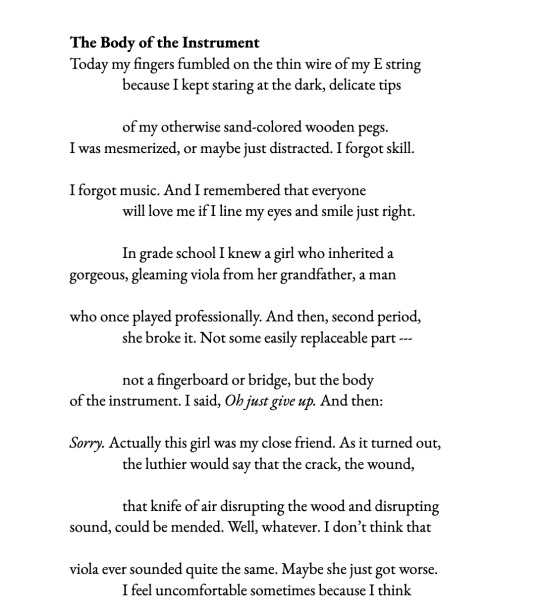

wrote this for week two of the workshop thru @books w @bettsfic , image ID under the cut
The Body of the Instrument
Today my fingers fumbled on the thin wire of my E string
because I kept staring at the dark, delicate tips
of my otherwise sand-colored wooden pegs.
I was mesmerized, or maybe just distracted. I forgot skill.
I forgot music. And I remembered that everyone
will love me if I line my eyes and smile just right.
In grade school I knew a girl who inherited a
gorgeous, gleaming viola from her grandfather, a man
who once played professionally. And then, second period,
she broke it. Not some easily replaceable part ---
not a fingerboard or bridge, but the body
of the instrument. I said, Oh just give up. And then:
Sorry. Actually this girl was my close friend. As it turned out,
the luthier would say that the crack, the wound,
that knife of air disrupting the wood and disrupting
sound, could be mended. Well, whatever. I don’t think that
viola ever sounded quite the same. Maybe she just got worse.
I feel uncomfortable sometimes because I think
I got something else from my grandfather, some terrible
tendency to grouse and bristle and shout.
I think my tongue curls easy over cruelty, like his.
These days, when I rub ointment into his face,
creased and circles like dark, rough-cut wood, I count wrinkles.
Measure the sags. Remember all the times
he called me fat and unsuitable. It is actually
a relief that old age has changed his colors. Even his eyes,
once a piercing pitch black, have gone yellow and green.
We went on a walk together today.
Through a sand-streaked crack in the sidewalk,
small ants bubbled and swarmed. How much can an ant
take after her progenitors? And can this wound really be
stitched together? Grandfather laughs,
and we trample the creatures underfoot.
#poetry#tumblr writing workshop with betts#original poetry#ok this feels super drafty in the sense i just havent thought enough about this stuff but im putting it out there.
26 notes
·
View notes
Text
What to learn first on violin?
Understanding Your Instrument
Parts of the Violin
As a violinist and teacher, I always begin by introducing the parts of the violin to my students. Knowing the anatomy of your violin is crucial. It includes the scroll, pegbox, neck, fingerboard, bridge, tailpiece, and more. Each part plays a vital role in the function and sound of the instrument.
How to Care for Your Violin
Caring for your violin involves regular cleaning with a soft cloth to remove rosin dust from the violin and bow. Store your violin in a stable environment away from extreme temperatures and humidity to protect the wood and varnish.
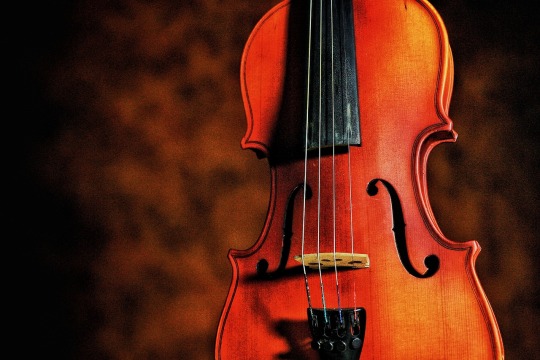
Core Skills to Develop
Proper Posture and Holding the Violin
Setting Up Your Stance
Good posture is foundational for playing the violin effectively. Stand straight with your feet shoulder-width apart. Ensure your neck and shoulders are relaxed to prevent tension and fatigue.
Holding the Violin and Bow Correctly
The violin should rest between your jaw and collarbone, secured by your shoulder rest. Hold the bow with a relaxed grip, allowing your fingers to curve naturally around it. This grip provides control and flexibility in your bowing.
Basic Bowing Techniques
Bow Grip and Movement
Your bow grip is critical for producing a beautiful tone. Hold the bow with a relaxed thumb bent inward and fingers draped over the frog. The movement should come from your elbow and wrist, allowing smooth and fluid strokes.
Understanding Bowing Patterns
Bowing patterns vary from simple, straight strokes to more complex rhythms. Beginners should start with simple, consistent bow strokes to build muscle memory and control.
Essential Violin Techniques
Fingering and Note Placement
First Position Notes
The first position on the violin is where all beginners start. It involves notes played without shifting your hand up the fingerboard. Mastering these notes is crucial before advancing to more complex fingerings.
Simple Scales to Practice
Practicing scales is fundamental for intonation and finger strength. Start with simple scales like G major and D major to familiarize yourself with the fingerboard layout.
Tuning Your Violin
How to Tune
Tuning your violin is essential before each practice session. Start by tuning the A string to a standard pitch (440 Hz), then tune the D, G, and E strings relative to each other using perfect fifths.
Using a Tuner vs. Tuning by Ear
For beginners, an electronic tuner is recommended to ensure accuracy. Over time, try to develop your ear by tuning without the tuner to improve your musical ear.
Starting Your Practice Routine
Creating a Practice Schedule
Daily Practice Goals
Set achievable daily goals to keep yourself motivated. Even 15-30 minutes of focused practice can lead to significant progress.
Balancing Technique and Songs
Balance your practice time between technical exercises like scales and playing simple songs. This approach keeps the practice enjoyable and productive.
First Pieces to Learn
Easy Songs for Beginners
Begin with simple songs such as "Twinkle Twinkle Little Star" and "Ode to Joy." These pieces help build confidence and reinforce basic skills.
Playing with Simple Rhythms
Understanding and executing simple rhythms is crucial. Practice with a metronome to develop your timing and rhythmic accuracy.
Seeking Guidance and Further Learning
When to Start Lessons
Benefits of Having a Teacher
A violin teacher can provide personalized guidance, technique correction, and motivation. Regular feedback is invaluable for progress.
What to Look for in a Violin Instructor
Choose an instructor who is patient, knowledgeable, and communicative. Someone who can tailor their teaching style to your learning pace and interests will be ideal.
Self-Learning Resources
Online Tutorials and Courses
There are numerous online resources available. Websites like YouTube have free tutorials, while platforms like MasterClass offer structured lessons by professionals.
Recommended Books and Materials
"Essential Elements for Strings" and "Suzuki Violin School" are excellent starting materials. They provide progressive lessons and songs suitable for beginners.
FAQs
What is the first thing I should learn on the violin?
The first thing to learn is how to hold the violin and bow correctly, as proper posture and grip are essential for successful playing.
How often should I practice as a beginner?
Regular daily practice is key. Aim for at least 15 to 30 minutes per day to see consistent improvement.
What are some easy songs to start with on the violin?
Start with simple melodies like "Twinkle Twinkle Little Star," "Ode to Joy," and "Mary Had a Little Lamb."
How do I know if I’m holding the violin correctly?
Ensure the violin is stable between your collarbone and chin without straining your neck, and your left arm should comfortably reach the fingerboard.
Conclusion
Starting the violin is an exciting journey filled with challenges and achievements. By focusing on the basics, establishing a solid practice routine, and seeking the right guidance, you will set yourself up for a rewarding musical experience. Remember, consistency is key to mastering the violin, so keep practicing and stay inspired!
Read more about us at: https://clemmiemikaela290.wixsite.com/violinsforbeginner
2 notes
·
View notes
Photo
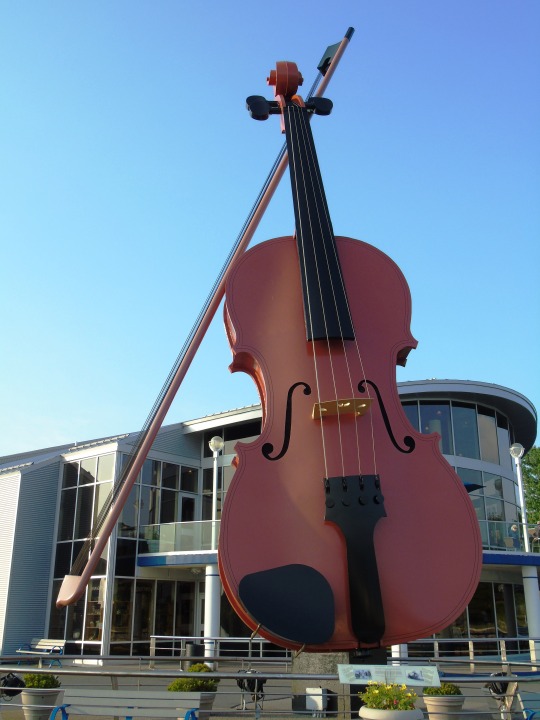



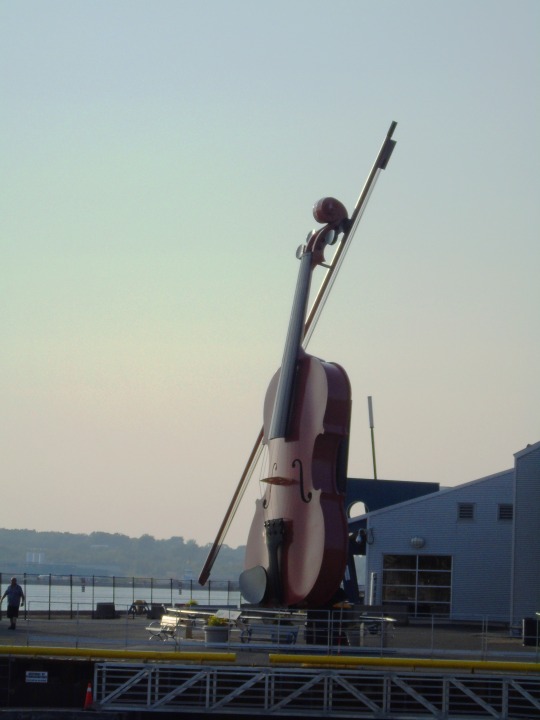
World Fiddle Day
Schedule a lesson or find a performance to enjoy one of the classic instruments of the working class, the fiddle. Or sit down to watch Fiddler on the Roof!
World Fiddle Day is an annual music celebration day celebrated on the Third Saturday of May. This year it will be observed on May 19. Even though World Fiddle Day was created in 2012, it gained popularity all over the world within a few years. It was created to celebrate and to teach the playing of bowed string instruments throughout the world by conducting participatory and inclusive events. The fiddle is a bowed string musical instrument, used by the players in all genres including classical music.
World Fiddle Day happens once a year and is meant to celebrate everything that everyone loves about the chirpy, fun and feisty art of fiddle music. You’ll see it being celebrated on the third Saturday of each May. The fiddle is always known to be something positive, with all the songs and notes it produces high energy, entertaining, and bringing something positive. Making the room dance, wherever the sound of a fiddle is played.
Around the world, this day is celebrated with dancing, music, and of course plenty of fiddle playing!
History of World Fiddle Day
Before we speak about the day, it may be best to get a better idea of the Fiddle that is being celebrated! The fiddle is a four-stringed musical instrument of the string family, also often referred to as a small type of violin. Like the violin, it is also played with a bow. The terms fiddling or fiddle playing actually refer to a style of music, most commonly folk music. The origins of the name ‘fiddle’ are not known but is believed to be derived from an early violin or the Old English word ‘fithele’. The fiddle is common to English folk music, Irish folk music, Scandinavian music, Austrian, French, Hungarian, Polish, American, Latin American, African, and even Australian music. There is no difference between the fiddle and small violin aside from the name and type of music the instrument is used for.
A fiddle has many parts including the neck, fingerboard, tuning pegs, scroll, pegbox, bridge, soundhole, strings, fine tuners, tailpiece, bass bar, soundboard, chinrest, button, backplate, and bow. The earliest fiddles (or violins) were derived from the bow instruments from the Middle Ages.
When it comes to building a high-quality fiddle, it can take as many as 200 hours for craftsmen to handcraft a professional fiddle, showing that for a relatively simple looking and fun instrument, a lot of craft and workmanship has to go into building one.
Traditional fiddle strings were made of pig, goat, horse, or sheep intestine. Today they are made from steel or aluminium over a nylon core. Now, the last fiddle fact that you may want to take down for your next game of trivia, is that the fastest fiddler/violinist on record is Ben lee who played ‘Flight of the Bumblebee’ in just over a minute in 2010. He played an average of 13 notes each second for a total of 810 notes in all. Now that is pretty impressive, so now the fiddle has been explained, what about the day?
The day was founded in 2012 by one Caoimhin Mac Aoidh, a professional fiddler from Donegal in Ireland. The day was birthed from a deep respect for one of the most expert and revered violin makers in history.
This month was chosen to coincide with the anniversary of the death of the Italian violin craftsman Antonio Stradivari’s way back in 1737.
Stradivari is today considered the most significant creator of violins in history, with his surviving instruments today seen as the most prized and finest ever created. Although he also made the larger string instruments cellos and violas, it’s the violins that he lovingly crafted that he is most well-known and remembered for.
Though only a couple of hundred of his works still exists, they have ��been known to capture some huge prices at auction and are especially sought-after amongst professional violin players.
How to celebrate World Fiddle Day
If you ever learned how to play the violin in school, or you frequently play it either for pleasure or for work, today is a great day to get out your fiddle and play a couple of tunes! Perhaps play a little for friends or family, or show your children how to play some simple themes. If you do not own one, or do not know how to play it, then this could be a great time to learn. It is always fun and engaging to learn a new musical instrument, so why not start to learn the art of the fiddle, and maybe at next year’s celebrations you can play to the world what you have managed to learn!
If you aren’t lucky enough to have learned how to play this string instrument, you can celebrate its day by listening to some of the fantastic performances by string artists easily found on Youtube or Spotify. Add a spring to your daily commute with some Mozart, Barber or Brahms!
And if you’ve always fancied trying your hand at the violin, perhaps today you could take a trial lesson learning how to play? Who knows – by the time the next World Fiddle Day comes along, you could be able to play along with everyone else who is fiddling away!
Whatever you get up to, have a great World Fiddle Day!
Source
#Largest Ceilidh Fiddle in the World#Sydney#Cape Breton Island#Nova Scotia#summer 2015#original photography#tourist attraction#landmark#vacation#2016#cityscape#Atlantic Ocean#Country Music Hall of Fame and Museum#The Source of Country Music by Thomas Hart Benton#Nashville#Tennessee#World Fiddle Day#WorldFiddleDay#closest Saturday to May 19th#20 May 2023#music#culture
9 notes
·
View notes
Text
Gibson J-45 "Banner" True Vintage 2011
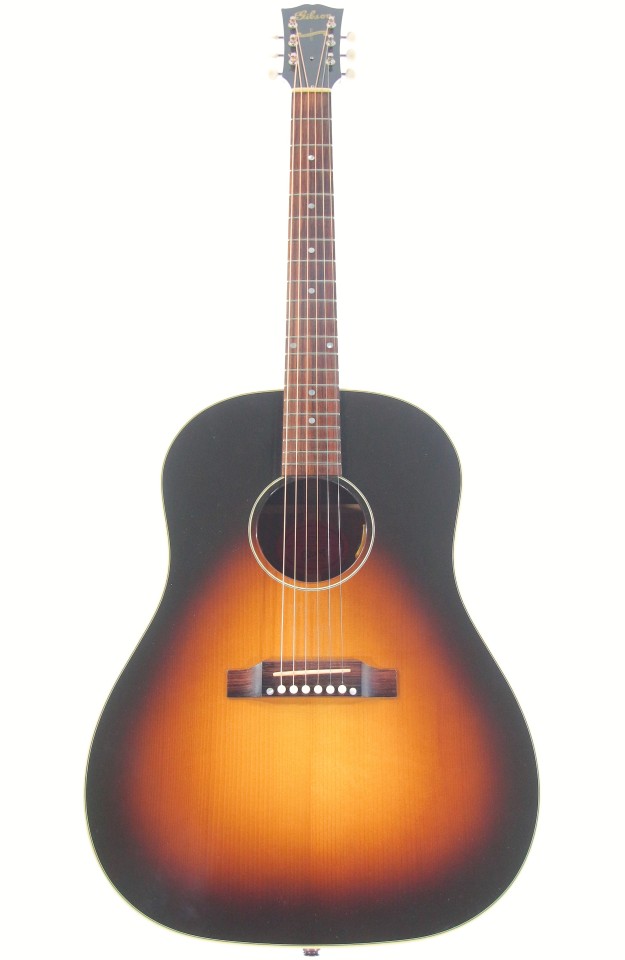
Gibson J-45 "Banner" TV True Vintage 2011 - the Adirondack top turns this guitar into an acoustic sound cannon. 3 pickups were installed to make it a perfect stage guitar as well: - LR Baggs Lyric - LR Baggs M80 - a high-end piezo pickup under the saddle (probably from K&K) The pickups and the professional installation alone cost more than 1000 €. The Gibson J-45 acoustic guitar is the prince of a range of Gibson flattops now referred to as "Round-Shoulder Dreadnoughts." This elegant workhorse debuted in 1942, and became an instant favorite for its rich, warm, vocal tone and excellent projection. Today, this Gibson acoustic guitar is played by the likes of Bob Dylan, Ralph McTell, Billy Jo Armstrong, and Lucinda Williams. Carrying accurate touches such as a Slim-Taper neck profile, teardrop tortoise pickguard, 4-ply top binding, and banner headstock inlay (declaring "Only A Gibson Is Good Enough"), the Gibson J-45 True Vintage is an accurate representation of the acoustic guitar that became the standard of hard-gigging bluegrass, folk, and country artists of the 1940s and 1950s. It is in excellent condition with only a small amount of playwear in the finish of the body. This particular example is light and as such superbly resonant and sounds great with that awesome Gibson ping. Chords ring perfectly with fantastic note definition and the nice low action makes this guitar a dream to play. Specifications: Body Style: Round Shoulder, Top Species: Adirondack Red Spruce, Back and Sides: Mahogany, Body Binding: Multi-ply top, single-ply back, Bracing: Scalloped top bracing, Neck Species: Mahogany, Fingerboard Species: Rosewood, Inlay: MOP Dots, Bridge Type: Traditional Belly Up with Bone Saddle, Bridge material: Rosewood, Pins: White Hardware, Tuners: Cream Button 3-in-line Tuners, Pickguard: Tortoise tear drop, Case: Period Correct True Vintage Hardshell Case with brown Tolex exterior and pink fabric interior Read the full article
2 notes
·
View notes
Text
Our Complete Collection Of Professional Fingerboard | XFlippro
Buy a professional fingerboard from our complete and latest collection that will make all of your tricks pop and flick with ease. Order from the website now.
#professional fingerboard#fingerboard#fingerboard wheels#fingerboard decks#fingerboard trucks#fingerboard bushings#finger boarding
0 notes
Text

Obsiusfb: Premium Fingerboard Wheels for Riders - Advanced & Beginners
Upgrade your fingerboard with Obsius premium fingerboard wheels. Perfect for both advanced and beginner riders. Shop now for the ultimate ride!
#professional fingerboard#fingerboard wheels#mini fingerboard wheels#fingerboards 34mm#pro fingerboarders#professional fingerboard decks#fingerboard baseplate#obsidian fingerboard trucks
0 notes
Text
How Do You Play a Viola?

The viola is a remarkable instrument that enriches the world of music with its unique timbre. Learning to play the viola requires dedication and an understanding of various techniques. It serves as a bridge between the higher-pitched violins and the lower-pitched cellos in an orchestra, adding depth and warmth to the overall sound. Whether you aspire to play in a professional ensemble or simply enjoy making music on your own, grasping the essentials of viola playing is a fulfilling pursuit.
Instrument Setup and Holding
Tuning the Viola
The viola is typically tuned to C, G, D, and A. To tune it accurately, you can use an electronic tuner or a tuning fork. For example, if you use a tuning fork that emits the A pitch, you can adjust the A string of the viola to match it. Then, by using the natural harmonics and relative tuning, you can tune the other strings. The C string, being the thickest, has a lower pitch, and the A string, the thinnest, has a higher one.
Proper Viola Hold
Hold the viola between your left shoulder and chin. The left hand should support the neck, with the thumb placed behind the neck and fingers curved over the fingerboard. Ensure that the viola is stable and not wobbling. For instance, if the viola is held too loosely, it can affect your intonation and make it difficult to play accurately.
Fingering Techniques
Left Hand Placement
The fingers of the left hand are numbered 1 (index finger), 2 (middle finger), 3 (ring finger), and 4 (little finger). Place the fingers on the fingerboard to produce different notes. On the A string, for example, pressing the 1st finger on the 1st fret gives a Bb. The closer the fingers are to the frets, the clearer the sound. However, they should not touch the frets directly.
Shifting Positions
As you progress, you’ll need to shift positions on the fingerboard. Shifting from one position to another allows you to access a wider range of notes. For example, moving from 1st position to 3rd position involves sliding the left hand up the neck. This requires practice to ensure a smooth transition and accurate intonation.
Bowing Techniques
Basic Bow Stroke
The most basic bow stroke is the détaché. Hold the bow with a relaxed grip, with the thumb on one side and the fingers on the other. Draw the bow across the string in a straight and even motion. The speed and pressure of the bow determine the volume and tone quality. For example, a faster bow speed with more pressure produces a louder sound, while a slower speed with less pressure creates a softer one.
Articulation Techniques
There are various articulation techniques. Staccato, for instance, involves playing short, detached notes. To achieve this, you use a quick, bouncing bow motion. Legato, on the other hand, is about playing smooth and connected notes. You can do this by using a continuous bow stroke and overlapping the notes.
Reading Sheet Music for Viola
Clef and Notation
The viola uses the alto clef. The notes on the staff correspond to different positions on the fingerboard and strings. The middle line of the alto clef represents the C note. You need to learn to read the alto clef accurately to play the correct notes. For example, a note on the bottom line of the alto clef is a G.
Rhythm Interpretation
Understanding the rhythm notation is crucial. You need to know the different note values, such as whole notes, half notes, quarter notes, and eighth notes. For instance, a quarter note gets one beat, and an eighth note gets half a beat. This helps you play the music with the correct tempo and rhythm.
Tone Production and Control
String and Bow Selection
The choice of strings and bow can affect the tone. There are different types of strings, such as gut strings, synthetic strings, and metal strings. Each has its own tonal characteristics. A good quality bow, made of materials like pernambuco or carbon fiber, can also enhance the tone. For example, a bow with more flexibility can produce a more nuanced sound.
Sound Projection and Articulation
To project the sound effectively, you need to use proper bow pressure and speed. A stronger bow stroke with a faster speed can make the sound carry further. In terms of articulation, clear and precise attacks and releases of the notes are essential. For example, in a fast passage, you need to ensure that each note is articulated clearly.
Practice and Performance
Practice Routine
Establish a regular practice routine. Start with warm-up exercises, such as long tones and simple scales. Then move on to more complex pieces. For example, you can practice scales in different positions and with different bowing techniques.
Performance Skills
When performing, you need to be confident and focused. Pay attention to your intonation, tone, and rhythm. For instance, make eye contact with the audience if appropriate and project your energy through your playing.
Conclusion
Playing the viola is a journey that combines technical skills, musical knowledge, and artistic expression. By mastering the instrument setup, fingering, bowing, reading sheet music, tone production, and practice and performance techniques, you can unlock the full potential of this beautiful instrument. Whether you are playing in an orchestra, a chamber group, or as a soloist, the viola offers a world of musical possibilities to explore and enjoy.
0 notes
Text
Price: [price_with_discount] (as of [price_update_date] - Details) [ad_1] Guitar Capo, 6-String Acoustic & Electric Guitar Capo,Guitar Capo Acoustic. High-quality silicone rubber protects your precious guitar capo from scratching or damage. Guitar Capo Acoustic, 6-String Acoustic and Electric Guitars, also fit different Instruments (Acoustic Guitar,Bass Guitar, Electric Guitar,Ukulele, Banjo,Mandolin). Easy to use, release and reposition quickly and easily with one hand, and use the lever on the back to release it without pulling the strings of the instrument without disturbing the guitar tuning.The guitar capo works very well, and the silicone pad protects the neck from scratching while providing even pressure on the fingerboard. When the capo is placed along the neck, the strings do not buzz and everything stays in harmony. PROFESSIONAL CAPO: Quickly and easily releases and repositions with one hand without disturbing tuning. The strong spring action clamps it firmly in place. PROVIDE SAFETY ASSURANCE FOR MUSICAL INSTRUMENTS: The Guitar Wall hanger Deep "U" cradle design prevents the guitar from being improperly placed in the hanger, will ensure your guitar will never fall out. Hangers swivel freely on the wall mount, which allows the guitar to find its own center of gravity - less stress on the neck. GUITAR STRINGS: Plain acoustic guitar strings for routine string changes or replacing broken strings STRENGHT: Made of stainless steel with silver-plated copper alloy winding for a bright yet warm extended tone; nickel-plated ball end. MULTI-FUNCTION HANGER: Guitar Capo and Wall Hanger for Acoustic Electric Classical Bass Guitar Ukulele Mandolin Banjo and more. [ad_2]
0 notes
Text
Can choosing the wrong violin be harmful for beginners?
As a dedicated violin teacher and musician, I've witnessed firsthand the crucial impact of selecting the right violin for beginners. The right instrument can set the stage for a rewarding musical journey, while the wrong choice can lead to unnecessary challenges and setbacks. In this guide, I'll share my insights on the risks associated with choosing the wrong violin and how to make the best decision for your musical future.

1. The Impact of the Wrong Violin on Beginners
Physical Discomfort and Injury
Choosing an improperly sized or poor-quality violin can have immediate physical consequences. A violin that's too large or too small for the player can lead to awkward postures, straining muscles and joints, which may cause discomfort or even injuries. Such physical issues not only hinder a beginner’s ability to practice but can also discourage them from continuing to learn.
Learning and Motivation Setbacks
The frustration of dealing with an unsuitable violin can also impact a beginner's learning progress and motivation. A violin with poor sound quality or difficult playability can make even simple pieces challenging and disheartening to play, potentially leading to a loss of interest and motivation in continuing the pursuit of violin mastery.
2. Key Factors in Choosing the Right Violin
Size and Fit
Choosing the right size violin is fundamental for comfort and playability. For young beginners, violins come in various sizes (1/4, 1/2, 3/4, and full size). Ensure that the violin fits comfortably, allowing the arm to extend fully when holding the bow without strain. For adults, a full-size violin is typically suitable, but individual arm length and hand size can make a smaller size more appropriate.
Quality and Setup
A high-quality violin, properly set up by a professional, can significantly enhance the learning experience. This includes properly fitted bridges, sound posts, and smooth, well-functioning pegs. A well-set-up violin not only sounds better but also encourages proper technique and playing posture.
3. Recommendations for First-Time Buyers
Where to Buy a Violin
For beginners, purchasing a violin from a reputable retailer or luthier is advisable. Trusted shops often offer properly set-up, quality instruments and can provide valuable guidance. Some stores specialize in instruments for beginners and will help you choose the best violin for your needs, considering both size and skill level.
What to Avoid
Avoid the common mistake of choosing the cheapest option available. An inexpensive, poorly made violin can be false economy, as it may need more repairs and sooner replacement. Additionally, be wary of violins sold without any professional setup, as these can pose numerous challenges to novice players.
Conclusion
The importance of choosing the right violin cannot be overstated. Investing time and effort into selecting the right instrument can make a significant difference in a beginner's learning experience and overall musical journey. With the right violin, learners are more likely to enjoy practice, progress faster, and continue playing for years to come.
FAQs
What are the signs that a violin is the wrong size for me? If you cannot comfortably reach both the fingerboard and the bow or if holding the violin feels strained, it might be the wrong size.
How can the wrong violin affect my learning and playing? A poorly fitting or low-quality violin can lead to physical discomfort, poor sound production, and ultimately, slower progress and reduced motivation.
What should I look for when choosing a violin as a beginner? Look for a violin that fits your size, is of good quality, and has been professionally set up. Consider the instrument's playability and tone quality.
Where should I shop for my first violin to ensure quality and fit? Opt for reputable music stores or luthiers known for their focus on beginners. These places usually offer a better selection of properly adjusted instruments and more knowledgeable staff.
0 notes
Text
The Art of Maintaining Your String Instrument
String instruments are like special companions for performers and music lovers. They produce beautiful sounds that fill concert halls and practice rooms alike. Our souls are no exception. Music indeed fills our hearts like nothing else. But just like any valued friend, taking proper care of the strings is essential. It ensures they stay in top shape and continue to grace you with their music for years to come. Mastering the art of maintaining your string instrument goes beyond simply keeping it spic and span. It is about understanding its fragile nature and creating a nurturing environment that optimizes its sound and playability.
This guide delves into the essential practices for keeping your string instrument in pristine condition. Whether you're a seasoned virtuoso or a budding enthusiast, this guide will help you. Here we will explore daily routines, long-term care, and the importance of getting dedicated string instrument insurance and seeking professional help - as and when needed.
The Daily Touch: A Gentle Cleansing Ritual
After each use, take a few minutes to set a cleaning ritual. This simple act removes things that can build up and damage your instrument over time. Here's what you'll need:
A soft, lint-free cloth: Microfiber cloths are ideal as they effectively trap dust without scratching the instrument's delicate finish. Avoid abrasive materials like towels or paper products.
Rosin cloth: For staunch rosin build-up, a specialized rosin cloth can be helpful. These cloths are often treated with a mild abrasive that gently removes rosin without harming the varnish.
The Cleaning Process:
Gently wipe down the entire body of the instrument. Use long, smooth strokes following the grain of the wood. Pay particular attention to areas where your fingers and hands make frequent contact, like the neck and fingerboard.
For the strings, use the cloth to remove any accumulated dust or debris. Avoid applying excessive pressure, and never wipe across the strings with the bow hair, as this can transfer rosin dust back onto the strings.
For the bridge, carefully remove any rosin build-up around the string holes. Be very gentle, as the bridge is a crucial component that can be easily damaged if mishandled.
The fingerboard requires special attention. If your instrument has a varnished fingerboard, avoid using any cleaning solutions. A dry microfiber cloth is sufficient. Unvarnished fingerboards may benefit from a fingerboard cleaner designed specifically for that type of wood.
Rosin Removal
Rosin is essential for creating friction between the bow and strings, allowing you to produce sound. However, excessive rosin build-up can dull the tone and make playing more difficult. Here's how to strike a balance:
After each playing session, lightly wipe away any surface rosin with your cleaning cloth.
For more stubborn build-up, consider using a rosin cloth. However, avoid using it excessively, as it can remove the natural oils from the wood.
If rosin build-up becomes a persistent issue, consult a luthier (a professional string instrument maker or repairer) for cleaning recommendations specific to your instrument.

Beyond Cleaning: Creating a Stable Environment
String instruments are sensitive to fluctuations in temperature and humidity. Here's how to create a stable environment that promotes optimal playing conditions and protects your instrument:
Temperature: Aim for a consistent temperature between 68°F (20°C) and 72°F (22°C). Avoid exposing your instrument to extreme heat or cold, as this can cause warping, cracking, or damage to the glue joints.
Humidity: An ideal humidity level falls between 40% and 60%. In drier climates, a humidifier can help maintain consistent moisture levels. Conversely, in very humid environments, a dehumidifier might be necessary. Invest in a hygrometer to monitor humidity levels in your instrument's storage space.
The Importance of a Proper Case
Your instrument's case is its first line of defense against bumps, scratches, and accidental falls. Here's what to consider when choosing a case:
Durability: The case should be sturdy and well-constructed, with a hard outer shell and a soft, padded interior.
Fit: The case should snugly fit your instrument without being too tight. A loose-fitting case can cause the instrument to move around and potentially get damaged.
Climate control (optional): Some high-end cases come equipped with humidity control features, which can be beneficial in extreme climates.
Invest in a Dedicated Insurance Plan
No matter how much you love and care for your gear, you don’t have control over unforeseen conditions. However, with the right string instrument insurance coverage, you can take a sigh of great relief from possible financial woes.
#string instrument insurance#music#musicians#insurance#music insurance company#guitar#musical instruments insurance
0 notes
Text
Yamaha Acoustic Violin: Exceptional Quality and Value
When it comes to string instruments, Yamaha has long been synonymous with exceptional craftsmanship and unmatched sound quality. Among their impressive range of violins, the Yamaha V20G acoustic violin stands out as a premier choice for musicians seeking a high-quality acoustic violin. Inspired by the legendary Guarneri design, the V20G combines tradition with modern precision to produce a rich, sweet, and powerful sound.
Let’s explore the features that make the Yamaha V20G silent violin in India an exceptional instrument, offering both quality and value.

Rich and Sweet Sound
Unlike planning to buy electric violin, the hallmark of the Yamaha V20G is its remarkable sound quality. Inspired by the Guarneri del Gesù violins, known for their deep and expressive tones, the V20G captures this rich, sweet, and powerful sound. This violin is capable of producing a wide range of tonal colours, making it ideal for various musical styles and settings. Whether you’re performing a delicate solo, blending with an ensemble, or playing in an orchestral setting, the V20G’s sound projection and clarity will undoubtedly enhance your performance.
Specially Formulated Shading Oil Varnish
One of the standout features of the V20G silent violin is its stunning appearance, achieved through a painstakingly applied shading oil varnish. This specially formulated varnish not only enhances the violin’s visual appeal but also contributes to its tonal characteristics. The oil varnish adds a layer of warmth to the sound, allowing for a richer and more resonant tone. The meticulous finishing process ensures that each V20G violin has a unique and beautiful appearance, with a deep, glossy finish that highlights the natural beauty of the wood.

Carefully Selected Wood
The quality of a violin’s sound is heavily influenced by the materials used in its construction, and Yamaha spares no effort in selecting the finest woods for the V20G silent violin. The top plate is made from carefully chosen spruce, renowned for its excellent resonance and ability to produce a vibrant sound. The back, sides, and neck are crafted from high-quality maple, known for its strength and durability, as well as its ability to add a bright, clear quality to the violin’s tone. This careful selection of wood materials ensures that each V20G violin delivers consistent sound quality and playability.
Excellent Sound and Playability
The Yamaha V20G offers outstanding playability, making it a favourite among both aspiring and professional musicians. The violin’s design and construction allow for easy response and smooth bowing, enabling players to express their musical ideas effortlessly. The fingerboard, made from high-quality ebony, provides a smooth and comfortable playing surface, facilitating precise finger placement and intonation. Whether you’re a beginner or an experienced player, the V20G’s excellent playability will support and enhance your musical journey. Check out the violin price now!

Consistent Quality
Yamaha is renowned for its commitment to quality, and the V20G violin is no exception. Each instrument undergoes rigorous quality control to ensure it meets Yamaha’s high standards. This consistency in quality means that every V20G silent violin in India performs reliably, offering musicians peace of mind knowing that their instrument will deliver exceptional sound and playability every time they pick it up. This dedication to consistency makes the V20G a trustworthy choice for musicians of all levels.
Value for Money
In addition to its exceptional quality, the Yamaha V20G offers outstanding value for money. While it embodies the craftsmanship and tonal qualities of much more expensive violins, it remains accessible to a broader range of musicians. This combination of high quality and affordability makes the V20G an excellent investment for anyone serious about their musical development.

The Yamaha V20G acoustic violin is a testament to Yamaha’s legacy of excellence in instrument making. With its rich, sweet, and powerful sound inspired by Guarneri designs, the V20G stands out as a top choice for discerning musicians. The specially formulated shading oil varnish adds both visual and tonal warmth, while the carefully selected woods ensure consistent quality and playability. Whether you are a student or a professional, the V20G offers exceptional quality and value, making it an ideal instrument for anyone looking to enhance their musical journey.
Choosing the Yamaha V20G means investing in an instrument that delivers exceptional performance, beautiful aesthetics, and reliable quality, ensuring that your music always sounds its best. Find out the acoustic violin price at the Yamaha Music Store.
#Acoustic Violin#Acoustic Violin Price#Buy Electric Violin#Electric Violin#Silent Violin#Silent Violin In India#Violin Price
0 notes
Text
The Evolution of Bass Guitar Playing: Trends and Innovations in 2024
In the ever-evolving landscape of music, the bass guitar holds a special place, providing the rhythmic foundation that underpins countless melodies and grooves. As we step into 2024, the world of bass guitar playing is experiencing a renaissance, with new trends and innovations reshaping the way musicians approach their craft. At the forefront of this movement are tools like Musical Colors color-coded keyboard, fingerboard, and fretboard sticker guides, along with color coded online music theory resources, offering a fresh perspective on learning and mastering the bass guitar.
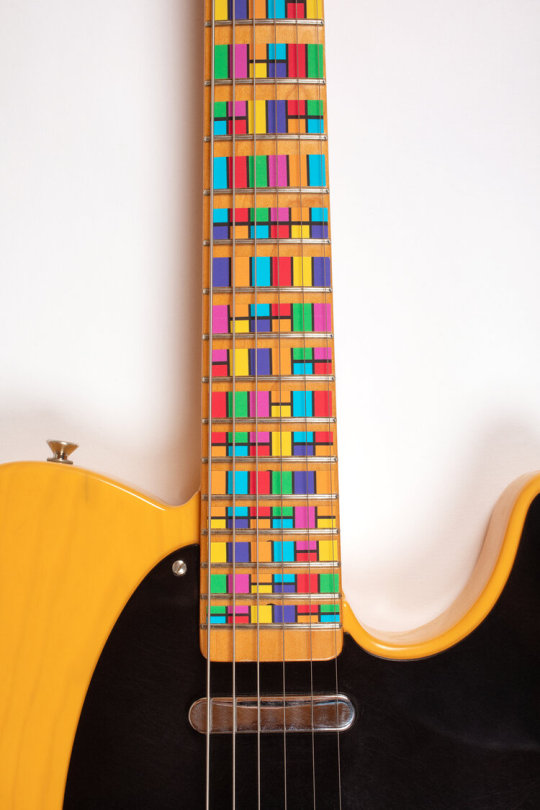
In addition to traditional music education, where memorizing notes and scales is the norm, with Musical Colors' innovative approach, players of all levels—from beginners to seasoned professionals—are empowered to explore the instrument in a whole new light. By scientifically linking each natural note in music to its natural distinct color from the color spectrum, learning musical notes, scales and chords becomes intuitive and engaging, fostering creativity and musical expression.
One of the key trends driving the evolution of bass guitar playing in 2024 is the emphasis on versatility. Today's bassists are no longer confined to one genre or style—they're exploring new sonic territories, blending elements of funk, jazz, rock, and beyond. With Musical Colors' color-coded guides and incredible online resource of color-coded scale cards, including little known international scales, aspiring bassists have the tools they need to navigate this diverse musical landscape with confidence and ease.
Another trend shaping the future of bass guitar playing is the integration of technology. From innovative pedal effects to digital recording software, musicians are leveraging technology to push the boundaries of what's possible on the instrument. With Musical Colors' online video tutorials and extensive music theory resources, players can stay on top of the curve, learning new conceptual techniques, which supports incorporating cutting-edge technology into their playing. Not to mention that physically upgrading your bass guitar with a logical color overlay is awesome and leads to countless breakthroughs.
But perhaps the most inspiring trend of all is the sense of community that permeates the bass guitar world in 2024. Thanks to platforms like Musical Colors, we aspire to have musicians from around the globe connect, collaborate, and share their passion for the instrument. The world is full of video of people playing musical instruments, but can you see what notes they're playing? With Musical Colors you can! Whether it's through online forums, social media groups, or virtual jam sessions, we want to promote bassists coming together to inspire and support one another on their musical journeys.
As we look ahead to the future of bass guitar playing, one thing is clear: the possibilities are endless. With tools like Musical Colors color-coded sticker guides and online resources, musicians have everything they need to unlock their full potential and make their mark on the world of music. So whether you're a beginner just starting out or an experienced player looking to take your skills to the next level, now is the time to join the revolution and experience the joy of playing bass guitar like never before.
#fretboard notes#Easy Ukulele Chords#Guitar Chords for Beginners#Easy Guitar Chords#How to Play Ukulele
1 note
·
View note